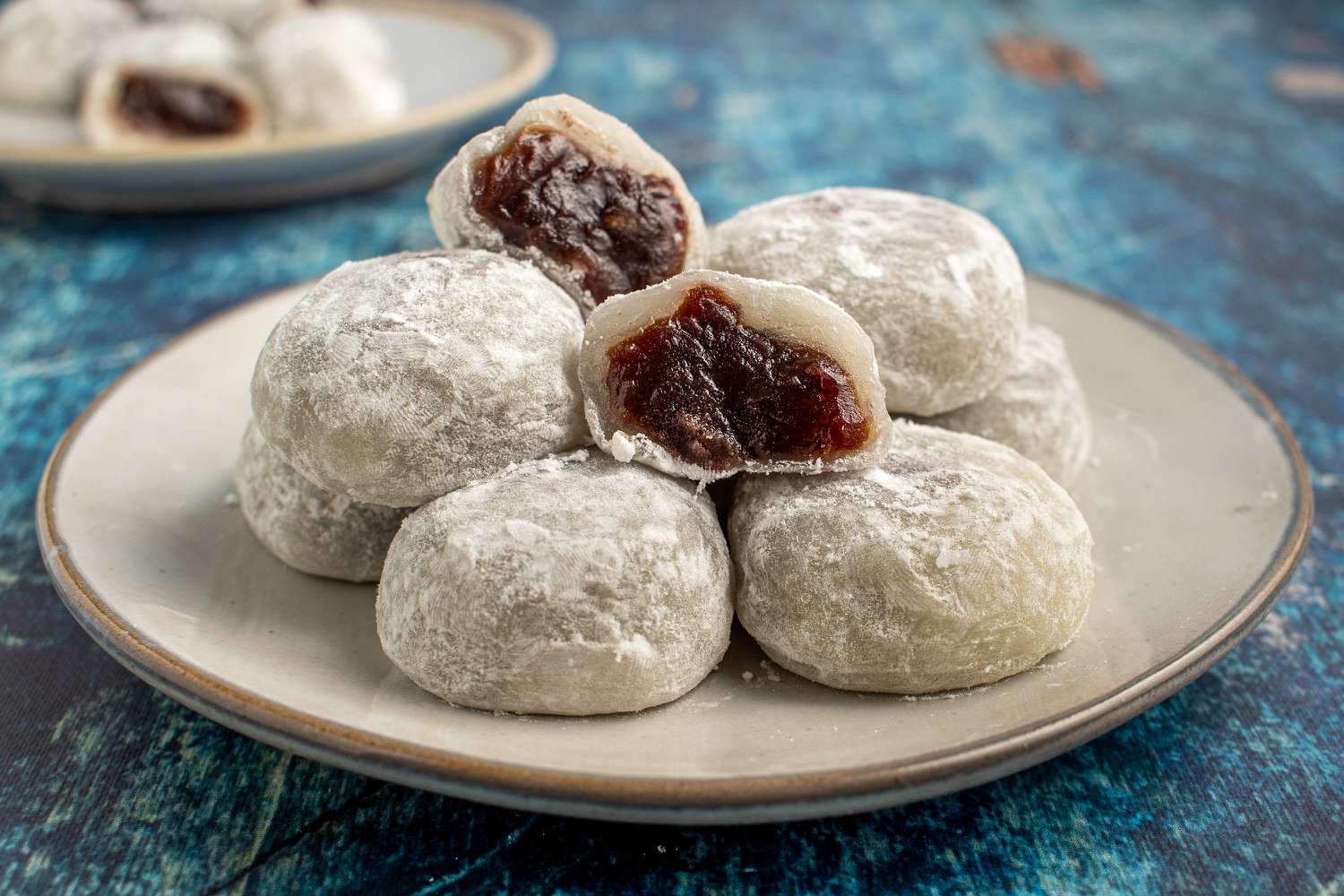
Daifuku is a delightful Japanese confection that has captured the hearts and taste buds of many around the world. But what exactly makes this sweet treat so special? Daifuku is a type of mochi, a chewy rice cake, filled with a variety of delicious fillings like sweet red bean paste, strawberries, or even ice cream. Its name translates to "great luck," which might explain why it's a popular choice for celebrations and special occasions. Whether you're a seasoned fan or a curious newcomer, these 30 facts about Daifuku will give you a deeper appreciation for this beloved dessert. Ready to learn more? Let's dive in!
What is Daifuku?
Daifuku is a traditional Japanese confection made of mochi (glutinous rice cake) filled with a sweet filling, usually anko (sweetened red bean paste). This delightful treat has a rich history and comes in various flavors and styles.
- Daifuku means "great luck" in Japanese, symbolizing good fortune and happiness.
- The most common filling for daifuku is anko, made from azuki beans.
- Mochi, the outer layer of daifuku, is made by pounding steamed glutinous rice until it becomes sticky and smooth.
- Daifuku is often enjoyed during Japanese New Year celebrations and other festive occasions.
- There are many regional variations of daifuku, each with unique ingredients and flavors.
Types of Daifuku
Daifuku comes in several varieties, each offering a different taste and texture experience. Here are some popular types:
- Ichigo Daifuku contains a whole strawberry inside, combining the sweetness of fruit with the chewy mochi.
- Yomogi Daifuku is made with mugwort, giving the mochi a green color and a slightly herbal flavor.
- Mame Daifuku includes whole beans mixed into the mochi, adding texture and a savory note.
- Shio Daifuku has a salty flavor, balancing the sweetness of the filling.
- Kusa Daifuku is made with Japanese mugwort, known for its health benefits and unique taste.
Historical Background
Daifuku has a long history in Japan, evolving over centuries to become the beloved treat it is today.
- Daifuku dates back to the Edo period (1603-1868), originally called "Harabuto mochi" or "belly thick rice cake."
- The name "Daifuku" was adopted in the late 18th century, reflecting its association with good fortune.
- Early versions of daifuku were larger and less sweet than modern varieties.
- Daifuku was initially a luxury item, enjoyed by the wealthy before becoming accessible to the general public.
- The popularity of daifuku spread throughout Japan, leading to the creation of numerous regional specialties.
Cultural Significance
Daifuku holds a special place in Japanese culture, often associated with celebrations and traditions.
- Daifuku is a popular offering at Shinto shrines and Buddhist temples during festivals.
- It is commonly given as a gift during special occasions, symbolizing good luck and prosperity.
- Daifuku is often included in osechi-ryori, the traditional Japanese New Year meal.
- The process of making mochi for daifuku is a communal activity, bringing families and communities together.
- Daifuku is featured in various Japanese folklore and stories, highlighting its cultural importance.
Modern Variations
While traditional daifuku remains popular, modern variations have emerged, incorporating new flavors and ingredients.
- Chocolate Daifuku features a rich chocolate filling, appealing to those with a sweet tooth.
- Matcha Daifuku is filled with matcha-flavored anko, combining the bitterness of green tea with sweetness.
- Ice Cream Daifuku has a cold, creamy filling, offering a refreshing twist on the classic treat.
- Mango Daifuku includes a tropical mango filling, adding a fruity flavor to the chewy mochi.
- Tiramisu Daifuku combines the flavors of the Italian dessert with the traditional Japanese confection.
Fun Facts
Here are some interesting tidbits about daifuku that you might not know:
- Daifuku is often enjoyed with a cup of green tea, balancing the sweetness of the confection.
- Some daifuku are dusted with kinako (roasted soybean flour) or powdered sugar for added flavor.
- Daifuku can be stored in the freezer and enjoyed as a frozen treat.
- The texture of mochi changes with temperature, becoming chewier when cold and softer when warm.
- Daifuku-making kits are available, allowing people to create their own versions at home.
Sweet Ending
Daifuku isn't just a treat; it's a bite of history and culture. From its humble beginnings in Japan to its global popularity, this dessert has won hearts everywhere. Whether filled with sweet red bean paste, fresh strawberries, or even ice cream, there's a daifuku for everyone. Its chewy texture and delightful fillings make it a unique experience. Plus, it's often enjoyed during special occasions, adding a touch of tradition to celebrations. Next time you savor a piece, remember the rich heritage behind it. Daifuku's charm lies in its simplicity and the joy it brings. So, go ahead, indulge in this delightful confection, and share its story with friends and family. Enjoying daifuku is like taking a sweet journey through time and culture, one delicious bite at a time.
Was this page helpful?
Our commitment to delivering trustworthy and engaging content is at the heart of what we do. Each fact on our site is contributed by real users like you, bringing a wealth of diverse insights and information. To ensure the highest standards of accuracy and reliability, our dedicated editors meticulously review each submission. This process guarantees that the facts we share are not only fascinating but also credible. Trust in our commitment to quality and authenticity as you explore and learn with us.
